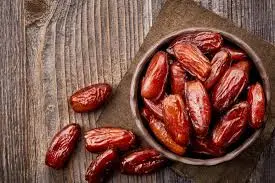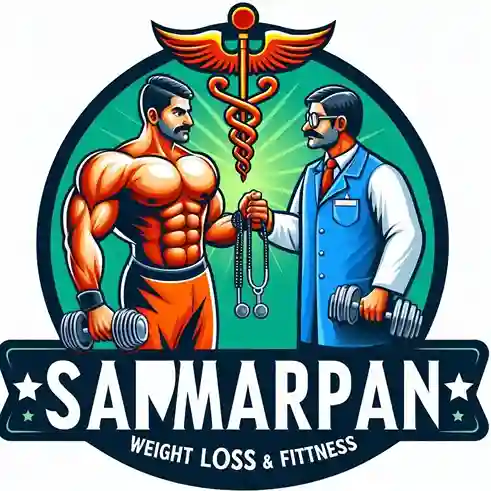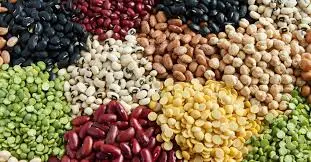High Fiber Diet Snacks
Introduction
A cup of kidney beans provides about one-third, if not more, of the required fibre amount. Berries, cruciferous vegetables, oats, seeds such as chia, and dark chocolate are additional foods high in fibre.
Health benefits of fibre are:
- stimulating the reduction of body weight
- reducing blood sugar levels and combating constipation
- feeding beneficial intestinal microbes and improving heart health
What are the various kinds of fibre?
Experts once used the term “fibre” to refer to a specific carbohydrate that the body could not digest. However, it is more difficult to characterize fibre since, as scientists discovered more recently, several digestible compounds have features with it.
Scientists categorize fibre in the following ways:
- Plants that we eat naturally contain dietary fibre.
- Fibre that is added to goods by manufacturers to enhance their health advantages is known as added fibre.
- Although they dissolve in water, soluble fibres are easily digested.
- Fibres that are impenetrable cannot be broken down.
Plants have soluble fibres, which include pectin and other compounds. They can help control blood sugar and cholesterol levels and are found in fruits, vegetables, oats, and barley.
Plants’ outer skins contain insoluble fibre, which is readily absorbed by the digestive tract. They may aid in avoiding constipation. Bran, celery, whole grains, and seeds are a few examples.
Is it possible to obtain adequate fibre from diet alone?
“You can consume enough fibre from your diet. ” However, over 90% of women and 97% of men do not, according to “a dietary component of public health concern.”
“In addition to an increased risk of heart disease, Type 2 diabetes, and colon cancer, you may start to experience constipation and other stomach issues when you don’t get enough fibre,” she cautions.
Foods with a lot of fibre
Don’t bother hunting for fibre in your chicken supper because it comes from plants. However, there are many benefits to the plant world, and you might be surprised to learn about the top dietary fibre sources.
Aim for 25 to 35 grams (g) of fibre each day, according to Taylor. Along with several delicious dishes and snacks, these are her top 22 foods that you should incorporate into your diet immediately.
Fibre comes in two forms, each with distinct benefits. Compared to insoluble fibre, which travels through the body undigested, soluble fibre, which gels with water in the body, offers greater advantages.
The following are linked to soluble fibre:
- Decrease blood sugar levels
- Reduce your cholesterol
- Reduced chance of heart disease
- higher concentrations of favourable intestinal flora
- increasing metabolism and controlling hunger to aid in weight loss
- decreased inflammation
Insoluble fibre is connected to
- Increased digestive tract volume and prevention of constipation
- Facilitating the quicker passage of food through the digestive system
- Makes you feel satisfied so you can eat less
Obtaining the Fibre You Need Each Day
Switching your diet instead of using fibre supplements is the greatest approach to increasing your intake of fibre if you feel like you’re among the great majority of people who don’t get enough of it. In general, food is a superior source of nourishment than supplements.
If you have difficulty getting enough fibre in your diet due to schedule conflicts or other issues, supplements may be able to help. Consult a healthcare professional before making dietary changes or taking supplements if you suffer from urinary tract infections, irritable bowel syndrome, or other digestive disorders or symptoms.
Increase the amount of fibre you consume gradually to allow your digestive system to become used to it. Otherwise, you may be at risk for constipation, gas, or bloating. However gradually, eating more fiber can be a big step toward better health.
Fibre’s advantages
The following advantages can be obtained from dietary fibre:
Lowering cholesterol: Especially if you take statins and ingest fibre supplements like psyllium and fibre, the fibre in the digestive tract can assist in lowering the body’s absorption of cholesterol.
Supporting a healthy weight: Fruits and vegetables that are high in fibre typically have fewer calories. Furthermore, fibre can slow down digestion, extending feelings of fullness. Constipation
Prevention: fibre can help reduce constipation by accelerating digestion. Because insoluble fibre is not digested by your body, it causes the digestive system to get larger. Intestines are stimulated as a result.
Blood sugar administration: Because high-fibre diets take longer for the body to digest, glucose does not enter the circulation as rapidly. As a result, your blood sugar levels stay more stable.
Lowering cancer risk: Consuming adequate fibre may help defend against colon cancer and other types of cancer. One explanation could be that certain forms of fibre, such as the pectin found in apples, have antioxidant qualities.
Drink lots of water and incorporate high-fibre items into your diet gradually over a few days. By performing this, negative side effects like gas and bloating may be avoided.
A banana with a few walnuts, celery with a tablespoon of peanut butter, carrots dipped in hummus, kale chips dipped in guacamole, orange and a piece of string cheese, sunflower seeds with a quarter cup of low-fat cottage cheese, and blueberries with a dollop of plain Greek yoghurt are all excellent options for high-fibre snacks that you can eat in between meals.
Is it achievable to obtain adequate fibre from diet alone?
According to the U.S. Department of Agriculture’s 2020–2025 Dietary Guidelines for Americans, fibre is “a dietary component of public health concern,” with over 90% of women and 97% of men lacking adequate fibre.
“When you don’t get enough fibre, you could develop loose stool and other abdomen troubles, in addition to an increased risk of developing cardiovascular disease, type 2 diabetes, and colon cancer,” she cautions.
Things to consider before consuming additional fibre
A word of caution before you join the fibre craze: “Be sure to add more fibre to your diet slowly.” Bloating and cramps might result from eating too much if your body isn’t acclimated to it.
Increase your intake of high-fibre foods gradually over a few weeks to avoid that inflated feeling. A further essential component of advice is to “make sure you drink enough water when adding fibre to your diet.
Fibre draws in water, which is beneficial, but it may contribute to constipation if you don’t drink enough water. Drink at least two litres of fluids every day to keep things going. Your body will be better equipped to adapt if you increase your fibre intake gradually and consistently and drink plenty of water.
22 foods high in fibre
These are 22 wholesome, filling, high-fibre foods.
- 3.1 grams of pears
A sweet tooth can be satiated with pears, which are also tasty and nourishing. They are good as well.
Fibre content: 3.1 grams per 100 grams, or 5.5 grams in a medium-sized raw pear.
- Two grams of strawberries
Usually eaten fresh, strawberries make a tasty and nutritious summer dessert or office snack. They also include manganese, vitamin C, and other antioxidants in addition to fibre.
One cup of fresh strawberries contains 3 grams of fiber, or 2 grams per 100 grams.
Try this strawberry banana smoothie.
- A 6.7-gram avocado
Avocados are a rich source of fibre and healthy fats. In addition, it contains several B vitamins, potassium, magnesium, vitamin E, and vitamin C. One cup of raw avocado.
Contains 10 grams of fibre, or 6.7 grams per 100 grams. Try these delectable avocado recipes.
- 10.1 grams of oats
Oats are an excellent supplier of fibre and are also high in vitamins, minerals, and antioxidants. They include beta-glucan, a potent soluble fibre that may help lower cholesterol and blood sugar levels.
A cup of raw oats contains 16.5 grams of fibre or 10.1 grams per 100 grams. Here are some overnight oat recipes.
- A 2.4-gram apple
Apples are a delicious and nutritious fruit. They also contain both soluble and insoluble fibre when consumed whole. A medium-sized, uncooked apple contains 4.4 grams of fibre, or 2.4 grams per 100 grams. Learn how to include apples in salads.
- A 6.5-gram bag of raspberries
A nutrient-dense fruit with a unique flavour is the raspberry. They are rich in manganese, fibre, and vitamin C.
Fibre content: There are 8 grams of fibre in one cup of raw raspberries, or 6.5 grams per 100 grams.
Other berries with a lot of fibre
Other berries that you can have as a snack throughout the day or add to smoothies, porridge, and desserts include:
- Each 100-gram portion contains 2.4 grams of blueberries.
- 5.3 grams of blackberries per 100 grams
- Try them with a raspberry-tarragon dressing on salads.
- 2.6 grams of bananas
Among the many minerals included in bananas are potassium, vitamin B6, and vitamin C. Resilient starch, an indigestible carbohydrate that acts similarly to fibre, is also present in considerable amounts in green or unripe bananas.
A medium-sized banana provides 3.1 grams of fibre, or 2.6 grams per 100 grams. For protein and fibre, try a banana and nut butter sandwich.
- 2.8 grams of carrots
One root vegetable that can be eaten either raw or cooked is the carrot. Carrots are a good source of fibre, vitamin K, vitamin B6, magnesium, and beta carotene, an antioxidant that your body converts to vitamin A. One cup of raw carrots contains 3.6 grams of fibre or 2.8 grams per 100 grams.
Try a soup full of vegetables that includes carrots.
- Two grams of beets
Important nutrients like folate, iron, copper, manganese, and potassium can be found in beets, often known as beetroot.
Additionally, beets include inorganic nitrates, which are minerals that may help with blood pressure control and athletic performance. A cup of raw beets contains 3.8 grams of fibre or 2 grams per 100 grams.
Try a lemon-dijon beet salad with beets.
- A 2.6-gram serving of broccoli
One cruciferous vegetable that is high in nutrients is broccoli. In addition to fibre, it includes potassium, iron, manganese, vitamin C, vitamin K, folate, and B vitamins. Antioxidants and other nutrients that may aid in the fight against cancer are also present. In comparison to other vegetables, broccoli has a comparatively high protein content. 2.4 grams per cup, or 2.6 grams per 100 grams, of fibre.
Learn how broccoli can be added to slaws and other recipes.
- 5.4 grams of artichokes
Artichokes are rich in fibre and a variety of other nutrients. One raw globe or French artichoke contains 6.9 grams of fibre or 5.4 grams per 100 grams.
Learn how artichokes are roasted.
- 3.8 grams of Brussels sprouts
Brussels sprouts are broccoli-related cruciferous vegetables. In addition to fibre, they are rich in potassium, vitamin K, folate, and antioxidants that may help prevent cancer. A cup of raw Brussels sprouts contains 3.3 grams of fibre or 3.8 grams per 100 grams.
Try roasting Brussels sprouts with bacon and apples.
Other vegetables that are high in fibre.
The majority of veggies are high in fibre. Other noteworthy instances are as follows:
- 4.1 grams of kale
- 2.2 grams of spinach
- 1.2 grams of tomatoes
- Lentils (weight: 10.7)
Lentils are affordable, adaptable, and extremely rich in nutrients. Furthermore, to many other nutrients, they are a good source of fibre and protein. The amount of fibre in cooked lentils is 13.1 grams per cup or 10.7 grams per 100 grams.
Try this lentil soup with cinnamon, turmeric, coriander, and cumin.
- 7.4 grams of kidney beans
One common variety of legumes is kidney beans. They offer a variety of minerals and plant-based protein, just like other legumes.
The amount of fibre in cooked beans is 12.2 grams per cup or 7.4 grams per 100 grams.
- 8.3 grams of split peas
The dried, split and peeled pea seeds are used to make split peas. While they can be used in dhals and other cuisines, they are frequently found in split pea soup served with ham. 16.3 grams of fibre, or 8.3 grams per 100 grams, are found in one cup of cooked split peas.
- 7 grams of chickpeas
Another kind of legume that is high in fibre, protein, and several minerals is the chickpea. Soups, curries, hummus, and many more recipes call for chickpeas.
12.5 grams of fibre, or 7.6 grams per 100 grams, are found in one cup of cooked chickpeas. Discover how to prepare hummus.
Other legumes with a lot of fibre. The majority of legumes are rich in fibre, protein, and other nutrients. When properly prepared, they provide a delicious of high-quality nutrients.
Other legumes high in fibre include:
- 8.7 grams of cooked black beans
- Edamame cooked: 5.2 grams
- 7 grams of cooked lima beans
- 5.5 grams of baked beans
Quinoa (2.8 grams) 17. A plant-based diet can benefit from quinoa, a pseudo-cereal that is high in fibre and protein. Among its other components are antioxidants, potassium, zinc, iron, and magnesium.
The amount of fibre in one cup of cooked quinoa is 5.2 grams or 2.8 grams per 100 grams.
- Popcorn (14.5 grams)
Popcorn can be a fun and healthy way to increase fibre. Air-popped popcorn is very high in fibre, calories for calories. However, if you add fat or sugar, the fiber-to-calorie ratio will start to decrease significantly.
Fibre content: 1.15 grams per cup of air-popped popcorn, or 14.5 grams per 100 grams.
Other high-fibre grains
Nearly all whole grains are high in fibre.
- 13.3% of almonds
Numerous minerals, such as magnesium, manganese, vitamin E, and good fats, are abundant in almonds. They can also be turned into baking almond flour.
Fibre content: 13.3 grams per 100 grams, or 4 grams per 3 tablespoons
- 34.4 grams of chia seeds
Chia seeds are little black seeds that are very nutritious. They have high levels of calcium, phosphorus, and magnesium and are a great source of fibre. Try adding chia seeds to homemade granola bars or incorporating them into jam.
Fibre content: 34.4 grams per 100 grams, or 9.75 grams per ounce of dry chia seeds.
Additional high-fibre seeds and nuts
The majority of nuts and seeds are high in fibre.
Among the examples are:
- 9 grams of fresh coconut
- Weight in pistachios: 10.6 grams
- 6.7 grams of walnuts
Central Food Data The US Department of Agriculture’s highly regarded food and nutrition database
- Seeds from sunflowers: 8.6 grams
- Six grams of pumpkin seeds
- 100 grams.
- Three grams of sweet potatoes
A popular tuber with a sweet flavour and a lot of filling capacity is the sweet potato. Beta carotene, B vitamins, and other minerals are abundant in it. Sweet potatoes make a delicious nacho base or bread alternative.
The amount of fibre in a medium-sized, skinless, boiling sweet potato is 3.8 grams or 3 grams per 100 grams.
- 10.9 grams of dark chocolate.
Nutrients and antioxidants can be found in dark chocolate. Just be sure to steer clear of those with a lot of added sugar and select dark chocolate with a cocoa level of 70% to 95% or more. A 1-ounce portion of 70%–85% cacao has 3.1 grams of fibre or 10.9 grams per 100 grams.
As stated by registered dietitian Gillian Culbertson, RD, LD, “Dying dates only intensify their sweet, caramel-like flavour because they are loaded with natural sugars.” fortunately that doesn’t mean they’re unhealthy just because they’re sweet. Dates are full of nutrients that your body needs and offer many other advantages.
Do you like going on dates?

Yes, to put it succinctly. The U.S. Department of Agriculture (USDA) states that a serving of dates, which is approximately 100 grams or four dates, contains a significant portion of the following nutrients that you should consume each day:
- 40% copper (.362 mg).
- 15% magnesium (54 mg).
- 14% manganese (.296 mg).
- 23% potassium (696 mg).
- 17% of vitamin B6 (.249 mg).
According to Culbertson, “Dates are also high in fibre, with about 7 grams per serving.” That is comparable to just under half a cup of lentils or a cup of cooked whole wheat pasta in terms of fibre content. Eating dates also helps you meet your body’s daily iron requirements.
One type of date, the Medjool date, is a simple way to increase the consumption of produce because it is a fresh fruit rather than a dried one. Additionally, each dish has 3.6 g of protein.
Dates’ health benefits
These little fruits are rich in nutrients. Culbertson lists the following six benefits of dates for your health:
- Boost intestinal health
Studies reveal that the health advantages of fibre extend beyond eliminating blockages in your internal plumbing system. Additionally beneficial for eating a lot of fibre from fruits and vegetables, such as dates:
- Make your heart healthier.
- Maintain constant blood sugar levels.
- Reduce overall cholesterol and LDL cholesterol.
- Steer clear of gaining weight and becoming obese.
- Lower your risk of heart disease, stroke, Type 2 diabetes, and colorectal cancer.
- Aid in the prevention of long-term illnesses
Antioxidant plant components are abundant in dates. Antioxidants safeguard your cells from damage that free radicals can do. Cell damage and a higher likelihood of chronic diseases are among the expenses associated with this theft.
Evidence indicates that free radicals contribute to the development of:
- Autoimmune conditions.
- Cancer.
- Heart-related conditions.
- Cataracts.
According to Culbertson, “Antioxidants help prevent this domino effect of disease development because they fight free radicals.” Dates have a variety of antioxidants, such as:
- Carotenoids.
- Flavonoids.
- Lignans.
- Phenolic acids.
- Polyphenols.
- Promote psychological wellness
Dates’ antioxidant content has been linked in several studies to enhanced brain function. Your brain along with other parts of your body are protected against inflammation by antioxidants. Alzheimer’s disease, Parkinson’s disease, and amyotrophic lateral sclerosis, (ALS), also referred to as Lou Gehrig’s illness, have all been related to inflammation in the brain.
“One experiment in lab models found that eating dates improved memory, learning, and reduced anxiety-related behaviours,” says Culbertson. Additionally, dates were associated with lower levels of amyloid beta molecules in the brain. Alzheimer’s disease development has been linked to plaques produced by these proteins. Although these findings are beneficial, Culbertson warns that human testing is necessary before we can be certain of these improvements.
- Might facilitate a natural birth
The physicians are threatening to forcibly remove you unless you discover a way to start things on your own. Your child was due a week ago. “Eating dates may promote labour, according to some research,” Culbertson explains. It’s still unclear how long you need to eat them, although one study found that consuming them every day throughout the final month of pregnancy made a difference. Additionally, dates could help people go into birth for shorter periods.
What potential impacts might dates have on this intricate biological mechanism? Dates contain compounds that appear to activate oxytocin receptors, which is the usual function of the neurotransmitter oxytocin. The secret to productive labour contractions is the presence of oxytocin. Additionally, consuming dates helps your body reserve sufficient power for the actual labour because they are a great source of natural sugars and beneficial carbohydrates.
- Make your skin look younger.
Plant hormones, commonly referred to as phytohormones aid in the growth and reproduction of plants, just like human hormones do. Additionally, they could be beneficial for your skin to look younger. Because of this, phytohormones sometimes appear in skin care products.
In one tiny trial, 5% palm date kernel extract was used to create a skin lotion. Middle-aged ladies managed the cream twice daily to the area around their eyes for five weeks. According to Culbertson, “the date palm kernel cream decreased the size and depth of their wrinkles.” “The results were of clinical importance and demonstrated a lot of promise, despite the study only involving 10 women.”
- Are less harmful than refined sugar
Do you want to consume less sugar? In a blender, combine dates and water to create a sweet date paste. Use it in a 1:1 ratio to replace sugar, so if your recipe calls for one cup of sugar, use one cup of date paste. As stated by Culbertson, “You’ll get fibre and antioxidants without missing any of the sweetness.”Additionally, dates have a glycemic index of about 42, making them a low-GI food that can help maintain normal blood sugar levels.
In dessert recipes, chopped dates can also be used as a more nutritious substitute for chocolate chips and chocolates. Or use them to counterbalance flavours that are sweet, such as dates and hazelnuts with roasted Brussels sprouts.
Dates can help you beneficially sate your sweet cravings. Dates are as high in calories as they are in nutrients, so don’t overindulge. Your body will thank you for adding this adaptable fruit to your diet, regardless of how long you’ve been a date fan.
Conclusion
Fibre is an essential nourishment that may help reduce blood sugar, combat constipation, and aid in weight loss. The majority of Americans do not consume the recommended amount of fibre per day, which is 25 g for women and 38 g for men.
You can improve your intake of fibre by including some of the items listed above in your diet. Snacks high in fibre are a good alternative, especially if they are made without added sugar, sodium, or preservatives. A variety of simple, plant-based snacks can help you get more fibre each day.
The majority of Americans do not consume nearly enough fibre, which means they are not benefiting from foods that can lower blood sugar and cholesterol and lower the risk of cardiovascular disease.
FAQs
Which ten foods are the highest in fibre?
The seeds of chick lentils, split peas, oats, apples, pears, almonds, chia seeds, avocados, avocados, and Brussels sprouts are some of the best foods to include in your diet. The nutrients in your diet must be balanced, though. You must take into account not just the fibre content of food but also its calorie and nutritional content per 100 g.
How can I get more fibre?
You can boost your intake of fibre through the incorporation of fresh fruits and vegetables, oats, and legumes into your diet. Choose wholemeal bread as opposed to white bread, and choose fruits and potatoes that have their skins on. If you’re not used to eating a lot of fibre, you can avoid gas and bloating by adding it gradually over a few days.
What is the highest-fibre snack?
Whole grains including oatmeal, quinoa, barley, brown rice, and farro are instances of foods high in fiber. Legumes and beans, such as chickpeas, split peas, lentils, black beans, and pinto beans. Seeds and nuts, such as the seeds from flax, pistachios, sunflower seeds, almonds, and chia seeds.
Which beverage has a lot of fibre?
Recipes for High-Fiber Drinks
Smoothie with Fruit and Yogurt.
Protein Shake with Chocolate and Peanut Butter.
Green Pineapple Smoothie.
Smoothie with spinach and avocado.
Banana Protein Smoothie with Almond Butter.
Does a banana have a lot of fibre?
Fibre: Approximately 3 grams of fibre, or 10% of the daily required amount, can be found in one banana. Fibre can help you retain a healthy weight, lower your level of cholesterol, lower your chance of colorectal cancer, and help keep your blood sugar levels regular.
Do dates contain a lot of fibre?
According to Culbertson, dates have roughly 7 grams of fibre per serving. That’s slightly about half a cup of lentils or the same amount of fibre as a cup of cooked whole wheat pasta. A further advantage of eating dates is that they might help you meet your daily iron requirements.
How can I increase my fibre intake?
Whole grains like barley, bulgur, brown rice, and whole-wheat bread or pasta are nutrient-dense meals that can help
you increase your daily fibre intake.
Fruits.
Vegetables.
Legumes, such as beans and peas.
Seeds and nuts.
Reference
- BSc, K. G. (2023, May 3). 22 high-fiber foods you should eat. Healthline. https://www.healthline.com/nutrition/22-high-fiber-foods
- Clinic, C. (2024, September 18). 31 High-Fiber foods you should be eating. Cleveland Clinic.
https://health.clevelandclinic.org/high-fiber-foods - LeBrun, N. (2024, April 24). 17 Healthy High-Fiber Snacks. Verywell Health. https://www.verywellhealth.com/high- fiber-snacks-8634697
- Clinic, C. (2024a, June 27). The sweet health benefits of dates. Cleveland Clinic. https://health.clevelandclinic.org/benefits-of-dates



